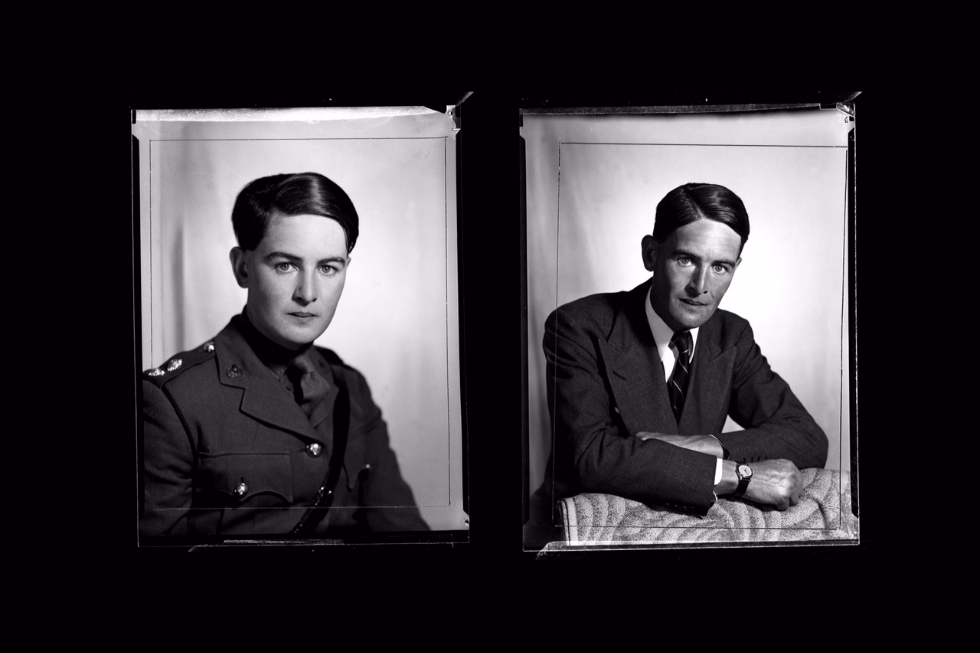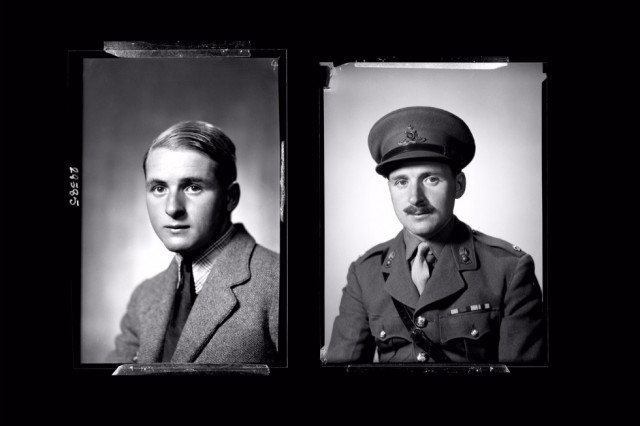Intermissions: The Quiet Portraits Of Edward Chambré-Hardman

Liverpool Central Library’s current exhibition, Intermissions, reveals a fascinating insight into the portfolio of one of the city’s most prolific landscape photographers: namely, his portraiture business that paid the bills. What is revealed, finds Pete Goodbody, is a rich historical record…
Edward Chambré-Hardman (1898-1988) was a Liverpool-based photographer, active between 1923 and 1966, and best known for his portrayals of landscapes and cityscapes. But it was his commercial portraiture that paid the bills; currently the subject of an intriguing new exhibition, Intermissions, shown in the sumptuous surroundings of Liverpool Central Library’s Hornby Room.
Photographer and academic Keith Roberts (Head of BA (hons) Photography at St Helens College; PhD candiate with Manchester Metropolitan University) has been given unprecedented access to the Hardman archives and records, initially with a view to re-photograph some of the locations where Hardman had created his most iconic work. This involvement with the archive led Roberts to a more curatorial role, and then to a realisation that the records required digitising into a searchable database. This caused Roberts’ focus to shift from Hardman’s landscape work to the more commercial, portraiture-focussed side of the business.
Thus began the massive task of translating Hardman’s handwritten record books into the substantially less glamorous yet more organised form of an Excel spreadsheet, which now has something in the region of 40,000 separate entries – probably about one third of Hardman’s studio output. Each record has the name of the sitter, a profession (where listed) and, crucially, a reference number identifying the glass negatives of the photographs taken at the sitting. These negatives were all stored by Hardman in metal biscuit tins in less than ideal conditions and, presumably, simply because the tins just happened to be the right size. The tins are now in the possession of Liverpool Central Library, stored in a freezer with the aim of slowing the deterioration of their contents, some of which have not survived the passage of time.
Once the spreadsheet had been created it could be searched for patterns and, in particular, as far as this exhibition is concerned, for sitters who had been photographed by Hardman more than once. The reference numbers meant the negatives could be identified and retrieved from the archive to be printed, assuming they were in a good enough condition. The images selected by Roberts for Intermissions are all presented as a pair – the same person recorded by Hardman at two different times. It is this gap between sittings that Roberts describes as the “intermission”, hence the title of the exhibition. Presenting the portraits as pairs emphasises the passage of time in the life of the sitter; many of whom witnessed enormous changes in British life, including two World Wars.
The differences between the two portraits of the same person are, in most cases, quite striking — note the difference between man and boy — but there is more to this exhibition than a straightforward comparison of the way a person ages over time. The very act of putting the images on public display is a shift from Hardman’s original intentions. Hardman did enter his landscape work into exhibitions and salons, but never the commercial portraits. Of course, they were meant to be seen, but the intended audience was the sitter and his or her circle of friends and family.

Now, with a public audience, the pictures take on a new dimension. Apart from the personal copies paid for by the client, they existed only in the archive as a glass plate negative stored in a biscuit tin. This shift in function is deliberate because, although it may not have much impact on the majority of Intermissions visitors, Roberts’ expressed hope that some viewers may recognise, or even be related to, one or more of the sitters. That is precisely what happened on the opening night, when visitor recognised a pair of portraits as being a former next door neighbour.
Another aspect to this shift of function, and one that cannot be avoided, is the recognition by Roberts of his own influence on the curation process. Hardman was very particular about how his images should look when printed – even in the days pre-Photoshop, he would give specific instructions to the printers about his vision for the final print. The details of contrast, light and texture were always controlled by Hardman by written instructions on his proofs. Now, without that direction, Roberts had to make his own decisions about how the finished print would look.
In addition, he had to choose which of the five or six different plates taken by Hardman at the original sitting would be used for this new exhibition, 28 years after his death. This intrusion into the Hardman workflow is recognised by Roberts, and he acknowledges the questions that may arise about provenance, ownership and the like. Can Intermissions be presented as an exhibition of Hardman’s work at all?
Roberts refers to the pairs of images as creating a triangle, in which the spectator is one point, and each image of the pair are the others. This technique emphasises the time lapse between the two images and highlights the unknown story of the sitter’s life during that period. One can have a guess at what may have happened, especially with the images of service personnel, but others are more benign. Some stories could probably be researched – military records may provide an insight in some cases. Others would be more difficult to discover, unless the subject happens to be known to the viewer.
Intermissions is much more than an exhibition of photography, albeit by one of Liverpool’s best known practitioners. It is a slice of social history taken from a resource that was never intended to be looked at by an arts audience or the wider general public, and that is probably why it works so well and on so many levels. This is a never-before seen recognition of Hardman’s commercial work, as well as an exercise in demonstrating his social documentary, even if that was not the original purpose of creation.
Keith Roberts’ database will endure and will, at some point, be made available for others to use. The timelapse between pairs of portraits shown here are not the only patterns to be found; many people were photographed more than twice and the inclusion of the sitters’professions makes for even more research possibilities. As a historical record, the database cannot be viewed as a comprehensive one, simply because Hardman’s clients were restricted to those who could afford his rates, but none of this minimises the effect of this fascinating exhibition.
Roberts’ work has raised the profile of the portraiture side of Hardman’s practice, and made it available to a much wider audience than originally envisaged. He has created a valuable new tool and shown a new facet of Hardman’s rich legacy.
Pete Goodbody
See Intermissions: Images from the Edward Chambré-Hardman Commercial Portraiture Collection at the Hornby Room, Liverpool Central Library, until 29 January 2016 — free entry
See more via Twitter @HardmanPortrait
Step back in time to the 1950s — visit Hardman’s home and photographic studio on Rodney Street, Liverpool, via the National Trust





